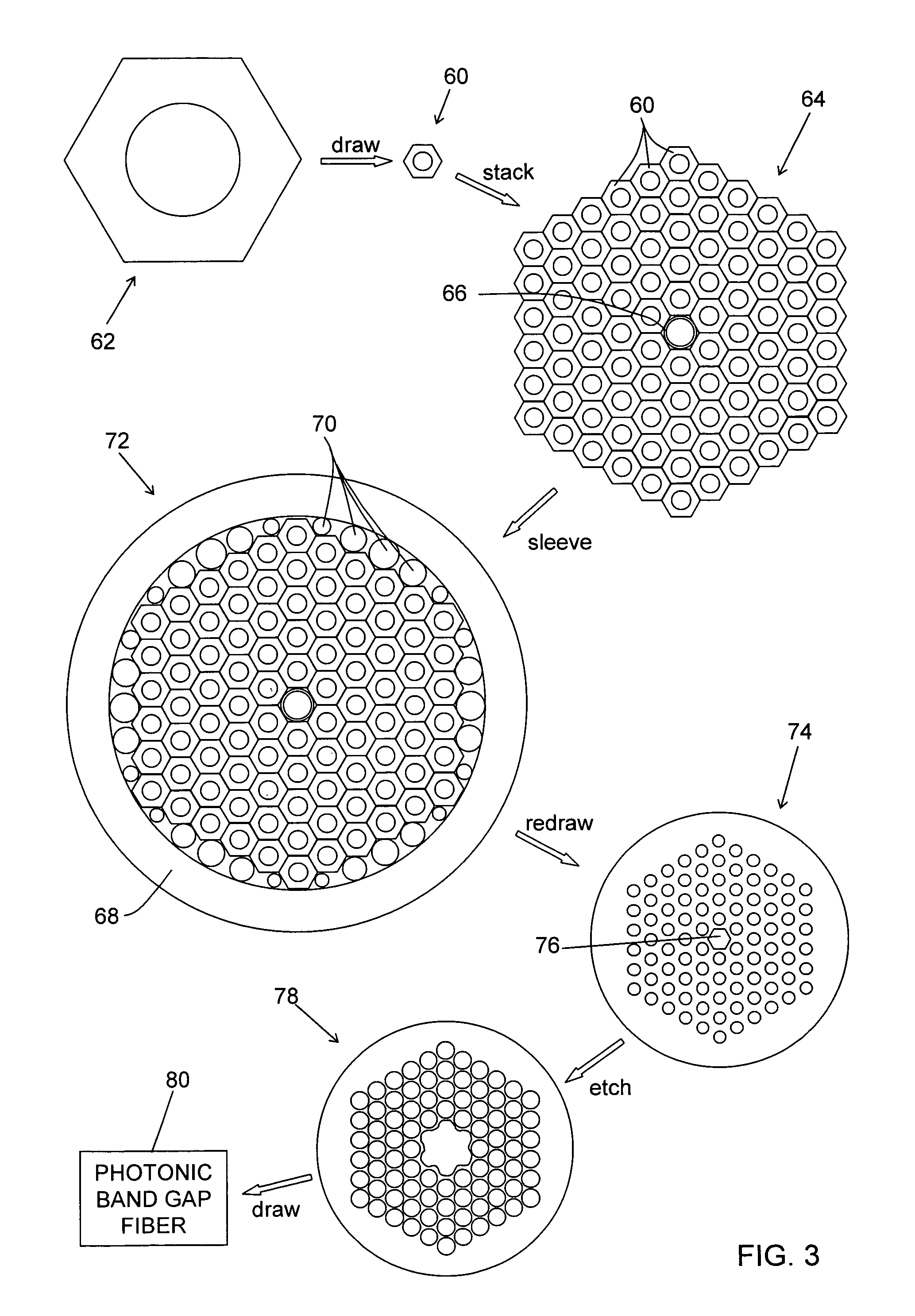Methods of generating and transporting short wavelength radiation and apparati used therein
a technology of short wavelength radiation and apparati, which is applied in the field of short wavelength radiation, can solve the problems of few workable methods for transmitting ultraviolet radiation from one location (i.e. the source) to another, the exposure of personnel to radiation, and the general inadequacy of conventional optical fibers for transporting ultraviolet radiation, etc., and achieves the effect of high quality and higher intensity
- Summary
- Abstract
- Description
- Claims
- Application Information
AI Technical Summary
Benefits of technology
Problems solved by technology
Method used
Image
Examples
Embodiment Construction
[0033]The present invention relates generally to the use of photonic band gap fibers in the transportation and generation of short wavelength radiation. Photonic band gap fibers guide light by a mechanism that is fundamentally different from the total internal reflection mechanism typically used in conventional optical fibers. Photonic band gap fibers have a photonic band gap structure formed in the cladding of the fiber. The photonic band gap structure may be, for example, a periodic array of holes having a spacing on the order of the wavelength of light. The photonic band gap structure has ranges of frequencies and propagation constants, known as band gaps, for which light is forbidden from propagating in the photonic band gap structure. The core region of the fiber is formed by a defect in the photonic band gap structure cladding. For example, the defect may be a hole of a substantially different size and / or shape than the holes of the photonic band gap structure. Alternatively, ...
PUM
| Property | Measurement | Unit |
|---|---|---|
| Fraction | aaaaa | aaaaa |
| Fraction | aaaaa | aaaaa |
| Angle | aaaaa | aaaaa |
Abstract
Description
Claims
Application Information
 Login to View More
Login to View More - R&D
- Intellectual Property
- Life Sciences
- Materials
- Tech Scout
- Unparalleled Data Quality
- Higher Quality Content
- 60% Fewer Hallucinations
Browse by: Latest US Patents, China's latest patents, Technical Efficacy Thesaurus, Application Domain, Technology Topic, Popular Technical Reports.
© 2025 PatSnap. All rights reserved.Legal|Privacy policy|Modern Slavery Act Transparency Statement|Sitemap|About US| Contact US: help@patsnap.com



